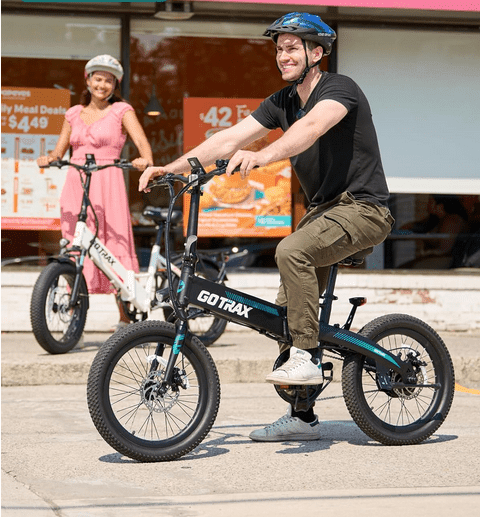Safe Biking for Beginners: Unlock Your Cycling Potential
Introduction
Welcome to our comprehensive guide on safe biking for beginners! Cycling is an excellent choice to improve your fitness, reduce your carbon footprint, or enjoy the outdoors. This article will provide valuable insights, tips, and techniques to help you start cycling confidently. Prepare to embark on an exciting journey toward becoming a skilled cyclist while prioritizing safety and enjoyment.
Benefits of Cycling
Before we dive into the details, let's explore the numerous benefits that cycling offers:
-
Physical Health and Fitness
Cycling is a low-impact exercise that provides an excellent cardiovascular workout. It strengthens your heart, improves lung capacity, and boosts overall endurance. Regular cycling helps with weight management, reduces the risk of chronic diseases, and enhances muscle strength and flexibility.
-
Mental Well-being
Engaging in cycling releases endorphins, also known as "feel-good" hormones, which uplift your mood and reduce stress, anxiety, and depression. The rhythmic motion of pedaling also promotes relaxation and mental clarity, allowing you to escape from the pressures of daily life.
-
Environmental Sustainability
Cycling is an eco-friendly mode of transportation that produces zero emissions. By choosing to bike instead of drive, you actively contribute to reducing air pollution and minimizing your carbon footprint. Embracing cycling as a means of transportation supports a cleaner and greener future.
Getting Started: Essential Equipment and Safety Measures
To ensure a safe and enjoyable biking experience, having the right equipment and following proper safety measures is crucial. Let's discuss each of these aspects in detail:
-
Bicycle Selection
Choosing the right bicycle is essential for a comfortable ride. Consider your body type, riding preferences, and intended usage. Opt for a bike that fits you well and suits your needs, whether a road, mountain, hybrid, or cruiser.
-
Helmet and Protective Gear
Wearing a properly fitted helmet is non-negotiable for cyclists of all skill levels. Protect your head from injuries by investing in a high-quality helmet that meets safety standards. Additionally, consider wearing reflective clothing, gloves, and elbow and knee pads for protection.
-
Bike Maintenance
Regular bike maintenance ensures your bicycle remains in optimal condition, minimizing the risk of accidents caused by mechanical failures. Learn basic maintenance tasks such as checking tire pressure, inspecting brakes, and lubricating the chain. If you need more clarification, consult a professional bike shop for assistance.

Riding Techniques: Mastering the Basics
Now that you have the necessary equipment and safety measures in place let's delve into the fundamental riding techniques that will boost your confidence on the road:
-
Mounting and Dismounting
Practice mounting and dismounting your bike to familiarize yourself with the process. Ensure one foot is always on the ground when starting or stopping, maintaining balance and stability.
-
Proper Posture and Pedaling
Maintain an upright posture while cycling, keeping your back straight and shoulders relaxed. Align your knees with the bike frame, and pedal smoothly in a circular motion, distributing effort evenly between both legs.
-
Steering and Turning
To steer effectively, use gentle hand movements and lean your body slightly in the direction you want to turn. Practice turning in a controlled manner, starting with wide turns and gradually progressing to tighter ones.
-
Braking Techniques
Mastering proper braking techniques is crucial for your safety. Use both brakes simultaneously, applying gradual pressure rather than squeezing them abruptly. Be mindful of wet or slippery surfaces, as braking distances may increase.
-
Traffic Awareness and Communication
When cycling on roads, always remain vigilant and aware of your surroundings. Signal your intentions with hand signals to communicate with other road users effectively. Observe traffic rules, use designated cycling lanes when available, and be cautious of blind spots.
Planning Your Routes: Exploring Scenic Paths
Discovering new routes and exploring scenic paths add an element of excitement to your cycling adventures. Here are a few suggestions on how to plan your routes effectively:
-
Research Local Bike Trails
Research and identify local bike trails in your area. Look for dedicated cycling paths, greenways, or parks that offer safe and enjoyable routes for riders of all levels. Consider factors such as terrain difficulty, distance, and the presence of amenities along the way.
-
Utilize Cycling Apps and Websites
Use cycling apps and websites that provide interactive maps, route recommendations, and user reviews. These platforms can help you discover popular cycling routes and provide insights into the experiences of fellow cyclists.
-
Join Cycling Groups and Clubs
Connecting with local cycling groups or clubs enhances your social experience and introduces you to experienced riders who can offer valuable route suggestions. Participating in group rides can further boost your confidence and provide a sense of camaraderie.
Conclusion
Congratulations on taking the first steps towards safe biking for beginners! Armed with the knowledge and techniques in this article, you're well on your way to becoming a confident and skilled cyclist. Remember, prioritizing safety and enjoying the journey is key to unlocking your cycling potential. So, gear up, hop on your bike, and confidently embrace the world of cycling, knowing you have the tools to navigate the roads safely and make the most of this incredible activity.
Remember to wear your helmet, follow traffic rules, and have fun exploring the world on two wheels!
Recent Related Articles:
5 Common E-Bike Maintenance Mistakes to Avoid
Can You Ride an Electric Bike in The Rain?



